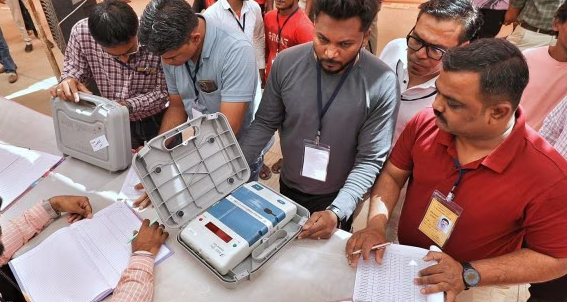Electronic Voting Machines (EVM) are a replacement for ballot papers. It records the votes of the voter electronically and helps in reducing manpower for counting votes at the time of elections. An EVM can record up to 2,000 votes. It was first utilized in the 1982 Kerala assembly. A list of candidates and their symbols can be found in EVM. Voters simply need to click the button in order to cast their ballot.
Voter Verifiable Paper Audit Trails, or VVPATs, are essential to voting. Voter verification is aided by the independent VVPAT machine, which is connected to the EVM. After casting a vote, a printed slip with the candidate’s name, symbol, and serial number is showed. This slip is viewable for seven seconds on the window after it automatically drops into the VVPAT’s sealed drop box.
The Returning Officer (RO), a government official designated by the ECI, is responsible for conducting elections in a constituency and counting votes. Votes for a constituency should ideally be cast in a single location under the RO’s close supervision. However, counting can be carried out at several locations during many assembly segments while being closely supervised by an Assistant Returning Officer (ARO).
Advantages of using EVM’s
EVM leads to saving paper , printing, transportation, storage and distribution.
. The results can be announced in hours rather than days because the counting process is. incredibly rapid.
. Voters only need to hit the blue button next to the candidate’s symbol. There is no requirement to mark and place ballots in vote boxes.
. It eliminates the scope of invalid votes.
Electronically transmitted postal ballots (ETPB) and postal ballots (PB) are used to start the voting process. These votes are counted directly under RO’s observation. Even if all of the PBs have not been counted, the EVM count starts 30 minutes after the PB count starts. The results from 14 EVMs are announced at the conclusion of each counting session.
Join our whatsapp group for Latest updates
Click Here for Chhattisgarh News
Click Here for Entertainment News





